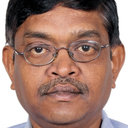Novel mutations in typical and atypical genetic loci through exome sequencing in autosomal recessive cerebellar ataxia families.
Keywords
Abstract
Nearly a thousand mutations mapping to 60 different loci have been identified in cerebellar ataxias. However, almost 50% of the cases remain genetically uncharacterized and there is a difference in prevalence as well as in the phenotypic spectrum of ataxia among various geographical regions. This poses a challenge for setting up a genetic panel for screening ataxia. In our ataxic cohort of 1014 families, 61% are genetically uncharacterized (UC). We investigated the potential of whole exome sequencing in conjunction with homozygosity mapping (HM) to delineate the genetic defects in three uncharacterized families with recessive inheritance each manifesting some unusual phenotype: (i) infantile onset ataxia with hearing loss (IOAH), (ii) Juvenile onset cerebellar ataxia with seizures (JCS) and (iii) Friedreich ataxia-like (FA-like). We identified a novel missense mutation in c10orf2 in the family with IOAH, compound heterozygous mutations in CLN6 in the family with JCS and a homozygous frame-shift mutation in SACS in the FA-like patient. Phenotypes observed in our families were concordant with reported phenotypes of known mutations in the same genes thus obviating the need for functional validation. Our study revealed novel variations in three genes, c10orf2, CLN6, and SACS, that have so far not been reported in India. This study also demonstrates the utility of whole exome screening in clinics for early diagnosis.


